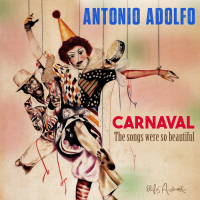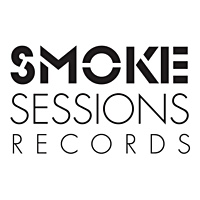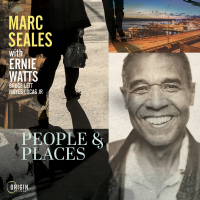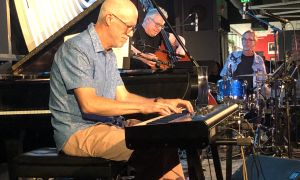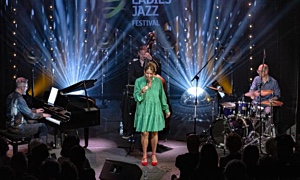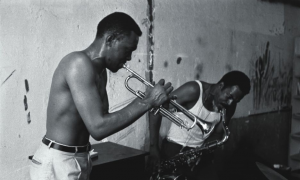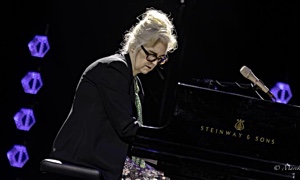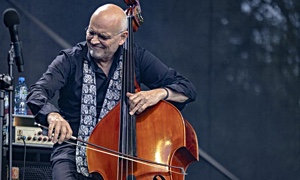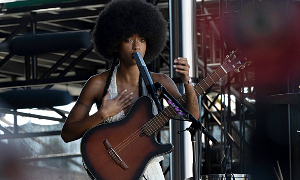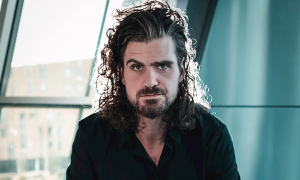Home » Jazz Articles » Forgotten Finds » Great Sidemen - Great Leaders
Great Sidemen - Great Leaders

Of course, most jazz musicians—including the ones now thought of as great leaders—have to start out as sidemen in some capacity or another.

Miles Davis
trumpet1926 - 1991

Charlie Parker
saxophone, alto1920 - 1955

John Coltrane
saxophone1926 - 1967

Keith Jarrett
pianob.1945

Charles Lloyd
saxophoneb.1938
Whatever the drawbacks to being a sideman, there have been musicians who have nevertheless found themselves pegged in the role for the duration of their careers. These were the guys who made their names or achieved their greatest fame in other people's bands but were never able to convert that notoriety to equal success under their own monikers, despite releasing some really great music of their own that is worth hunting down.
Although, they'd already been playing and recording together for a couple of years, altoist

Paul Desmond
saxophone, alto1924 - 1977

Dave Brubeck
piano1920 - 2012
Eventually, in 1967, that version of the Brubeck band did break up, and Desmond took a hiatus from performing. By 1973, after a rest, he had signed with the CTI label and began to release a series of records under his own name, as well as working on projects with other musicians. A good example is Desmond's Pure Desmond (CTI, 1974), a quartet date featuring bassist

Ron Carter
bassb.1937

Modern Jazz Quartet
band / ensemble / orchestrab.1952

Connie Kay
drums1927 - 1994

Ed Bickert
guitar1932 - 2019
Eventually, Desmond did reconnect with Brubeck for a tour and album, recapitulating the greatest success either of them had known, but in the interim the saxophonist made some worthwhile music on his own.

Johnny Hodges
saxophone, alto1907 - 1970

Duke Ellington
piano1899 - 1974
But forty years is a long time to be a sideman, and Hodges regularly recorded under his own name, even leaving the Ellington Orchestra for a few years to set up his own outfit. Some of his records are pure Ellingtonia, but others are small combo dates that spotlight his horn in ways he could never enjoy in the big band. The small dates are, in fact, great way to go for those looking to hear the essence of Hodges' sound.
A terrific example is Buenos Aires Blues (Lone Hill Jazz, 2009). This reissue of a 1963 quintet date is all about Hodges' gorgeous, emotive alto. The songs are a mix of Ellington classics, the saxophonist's own compositions, and a pair of tracks penned by pianist

Lalo Schifrin
arranger1932 - 2025
As a bonus, the CD includes an entire second album, The Eleventh Hour, originally released by Verve in 1963, with arrangements by

Oliver Nelson
saxophone1932 - 1975
Tenor saxophonist

Charlie Rouse
saxophone, tenor1924 - 1988

Thelonious Monk
piano1917 - 1982
Rouse cut some great records both before and after his time with Monk. A number of his later releases feature, in particular, some of his best playing and most distinctive voice. His
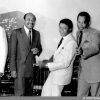
Sphere
band / ensemble / orchestra
Buster Williams
bass, acousticb.1942

Kenny Barron
pianob.1943
But Rouse saved his best for last. On June 6th and 7th, 1988, he entered the Rudy Van Gelder Studio (which mercifully had its piano issues sorted out by this time) with a sextet that included two underappreciated veterans, pianist

Walter Davis Jr.
piano1932 - 1990

Sahib Shihab
woodwinds1925 - 1989

Claudio Roditi
trumpet1946 - 2020
The hallmark of this date is the arranged harmonizing between Shihab's baritone and Rouse's tenor, which adds punch and bottom end weight to almost everything on the disc. Shihab's "DiDa" highlights the two saxophonists' instrumental interplay, with a bouncing two-note call-and-response, before the theme dissolves into a strolling blues. The band covers a lot of ground, including infrequently heard compositions by

Elmo Hope
piano1923 - 1967

Mal Waldron
piano1925 - 2002

Oscar Pettiford
bass1922 - 1960

Keith Jarrett
pianob.1945

Ray Bryant
piano1931 - 2011
This was the broadest, most creative album Rouse ever recorded in his forty-year career. His soloing demonstrates a creativity and verve that, for whatever reason, was not as prominent on his other recordings, and the arranging takes full advantage of the instruments at hand. The playlist alone is notable for its selections, drawn from deep in the vaults of composition. It's a crying shame this album was a one-off studio date, as this would have been one hell of a working band.
Strangely, the tapes were shelved after the session was completed. Four months after Soul Mates was recorded, Rouse was dead. Sahib Shihab followed the next year, and Davis Jr. just a couple years after that. Sadly, none of them lived to see the album released.
Rouse, Hodges and Desmond are just three of many musicians who made terrific music outside their stints with more famous leaders. There are surely hundreds, if not thousands, of albums out there by great musicians whose primary role was supporting other leader's ensembles. Pay attention to something that stands out on a session—a saxophone break on a piano album, or a single instrument soloing over a big band—and there's a very good chance that somewhere there is a recording, under that sideman's own name, that is well worth hearing.
Further Listening
Dave Brubeck Quartet, Time Out (Columbia, 1959)
Jim Hall, Concierto (CTI, 1975)
Johnny Hodges, Everybody Knows Johnny Hodges (Impulse, 1964)
Duke Ellington & Johnny Hodges, Back to Back (Verve 1959)
Thelonious Monk, Straight, No Chaser (Columbia, 1967)
Charlie Rouse, Social Call, featuring Red Rodney (Uptown, 1984)
Tags
Paul Desmond
Forgotten Finds
Greg Simmons
United States
Miles Davis
Charlie Parker
John Coltrane
Keith Jarrett
charles lloyd
Dave Brubeck
Ron Carter
Modern Jazz Quartet
Connie Kay
Ed Bickert
Johnny Hodges
Duke Ellington
Lalo Schifrin
Oliver Nelson
Charlie Rouse
Thelonious Monk
Sphere
Buster Williams
Kenny Barron
Walter Davis Jr.
Sahib Shihab
Claudio Roditi
Elmo Hope
Mal Waldron
Oscar Pettiford
Ray Bryant
Comments
PREVIOUS / NEXT
Support All About Jazz
 All About Jazz has been a pillar of jazz since 1995, championing it as an art form and, more importantly, supporting the musicians who make it. Our enduring commitment has made "AAJ" one of the most culturally important websites of its kind, read by hundreds of thousands of fans, musicians and industry figures every month.
All About Jazz has been a pillar of jazz since 1995, championing it as an art form and, more importantly, supporting the musicians who make it. Our enduring commitment has made "AAJ" one of the most culturally important websites of its kind, read by hundreds of thousands of fans, musicians and industry figures every month.




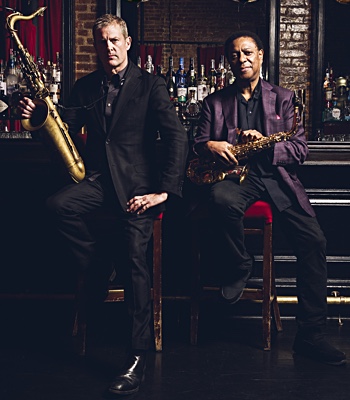
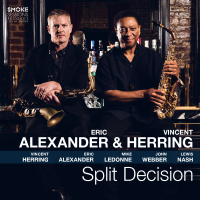
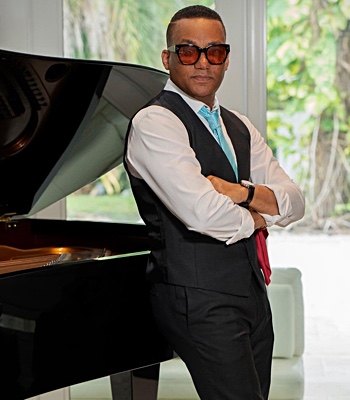
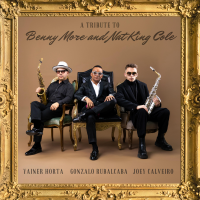 Buy Now
Buy Now
